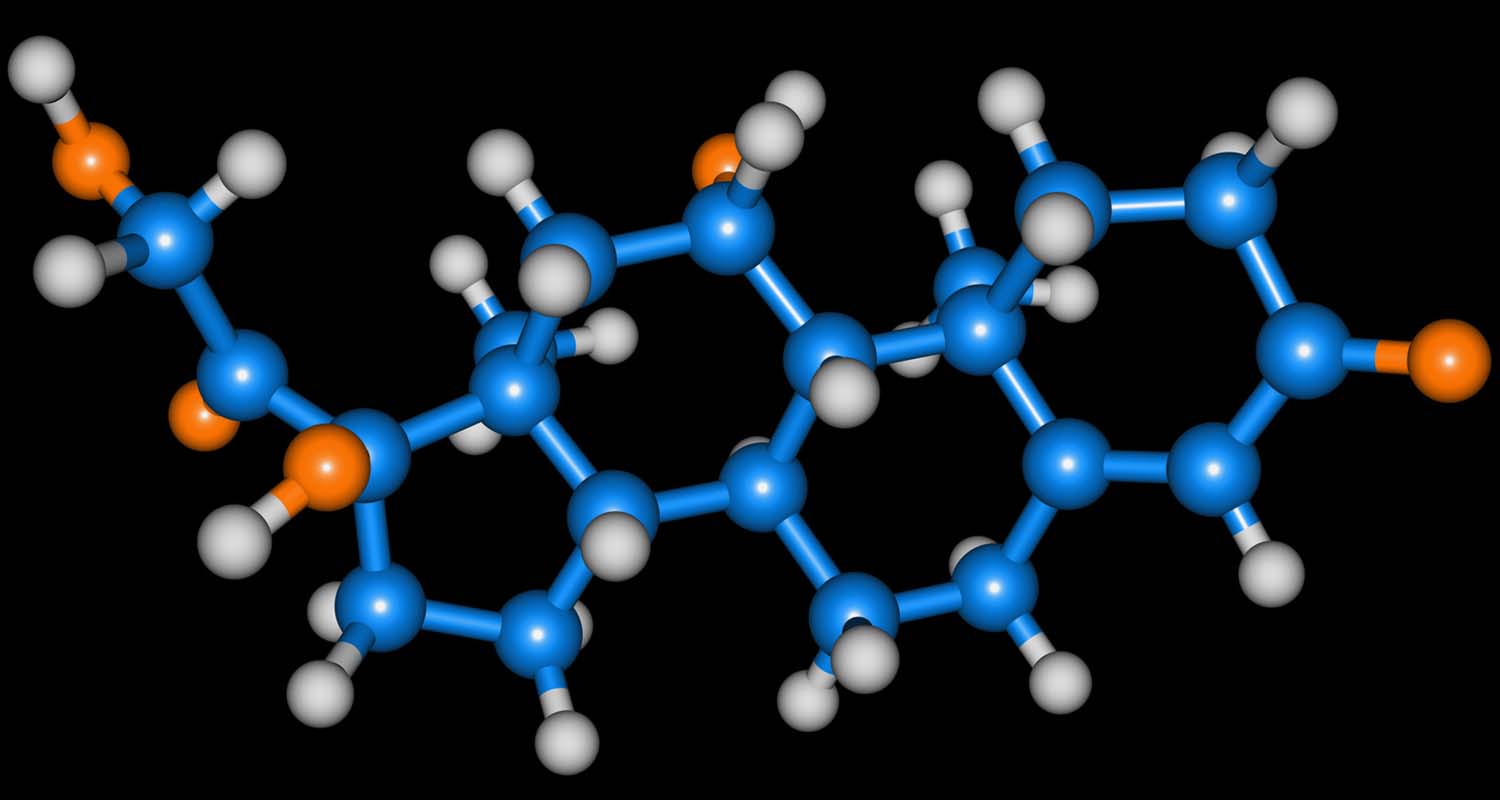
For decades, Lara Logan reported from war zones around the world, including Afghanistan, Iraq, and Kosovo. But more recently, the 60 Minutes correspondent faced back-to-back traumatic events in her own life: She survived a brutal sexual assault while covering the Arab Spring in Cairo; a year later, she was diagnosed with breast cancer.
In a Bulletproof Radio (iTunes) podcast episode, the mother of two reveals how she worked through her trauma by staying true to herself and her core values. “Integrity, resilience, and consistency are based on knowing who you are,” she says. “Don’t give them more than they deserve. Don’t give them anything, if you don’t have to. Don’t be a victim.” You can listen to more of Logan’s inspiring story here.
If you’re currently dealing with the pain of a traumatic experience, it may be difficult to see a way out. Read on to learn about the three distinct phases of trauma, and the science-backed methods to help you heal.
What is trauma?
The American Psychological Association defines trauma as “an emotional response to a terrible event like an accident, rape, or natural disaster.” Life experiences like divorce, illness, and death can also be traumatic. You typically feel shock and denial following a trauma. In the long term, you may experience flashbacks, volatile emotions, and physical symptoms like headaches, nausea, and fatigue.[ref url=”http://www.apa.org/topics/trauma/”]
On an episode of Bulletproof Radio (iTunes), psychiatrist and psychological trauma expert Dr. James Gordon likens trauma to an injury.
“Something happens to us that throws us off balance. Throws us into a state of confusion and forces us to shut down emotionally, to withdraw and distance ourselves,” says Gordon.
He goes on to explain how the things that happen to you in your past may affect how you react to traumatic events in the present.
“Sometimes we don’t understand why we behave in certain ways. Why we’re afraid of certain things. Why we get angry so easily at certain things. If we take the time to reflect, to go inside and be a little introspective and maybe ask a few questions of our family members, we can find out what the source of the trauma is.”
While these responses are normal, they can make it difficult to move on with your life.
What happens in your body when you’ve been traumatized

- Trauma triggers an overproduction of stress hormones — namely cortisol. If you are constantly reliving a traumatic experience, stress hormones remain activated, keeping you in a state of high alert. [ref url=”https://www.ncbi.nlm.nih.gov/pubmed/25265282″] You might experience trembling or an exaggerated startle response, especially to things that remind you of the traumatic event. These are called “triggers.”
- You will enter the fight, flight, or freeze mode [ref url=”https://www.ncbi.nlm.nih.gov/pmc/articles/PMC2489204/”] whenever you feel triggered. What does this mean? You’ll feel compelled to either defend yourself against the trigger, run from it, or you could feel paralyzed. Sleep might be difficult and you may feel the need to avoid people or situations that you believe threaten your safety. [ref url=”https://www.ncbi.nlm.nih.gov/pmc/articles/PMC2795058/”]
- Trauma affects three areas of the brain — the amygdala, the hippocampus, and the prefrontal cortex — and can create lasting changes in all three regions. Animal studies reveal that post-traumatic stress disorder (PTSD) can lead to significant changes in brain size and can impair brain functioning. [ref url=”https://www.ncbi.nlm.nih.gov/pmc/articles/PMC3181836/”] Over time, the excess cortisol produced by the fight or flight response can actually rewire your brain’s circuitry, creating psychological and emotional distress. [ref url=”https://www.nature.com/articles/s41593-018-0073-9″]
Trauma is linked to future health problems

Chronic stress following a traumatic event can have long-term health effects[ref url=”http://www.traumacenter.org/products/pdf_files/japna425187.pdf”][ref url=”https://jamanetwork.com/journals/jama/fullarticle/209441″], including:
- Heart and liver disease
- Addictive behaviors like alcoholism and smoking
- Chronic pain conditions
- Gastrointestinal illness
- Cancer
- Anxiety and depression
- Feelings of despair, guilt, and shame
- Emotional numbness
- Cognitive impairment such as memory lapses, difficulty making decisions, distractibility, withdrawal from your typical routine, and even a lost sense of time
The 3 phases of trauma recovery
In her book “Trauma and Recovery,” American psychiatrist Judith Herman lays out three phases of trauma that you typically move through on your path to recovery. The stages are:
1. Safety and Stabilization
The aim of this phase is to regain a sense of safety in the world. Trauma makes you feel unsafe in your body and wary of other people. It can take anywhere from days to months to even years to feel safe again, depending on the severity of the trauma and how you process it.
The first step is to identify which of your difficult emotions, like intense fear or rage, are linked to the trauma, then learn how to manage these emotions. You can do this with the help of a loved one or a talk therapist. There are also non-verbal ways to help you regulate your emotions. More on those methods below.
2. Remembrance and Mourning
The second phase is about processing the trauma and naming it. You begin to use words and emotions to put the trauma into context. Therapy is a key part of this step. Get the input of a reputable counselor or therapist in a group or individual setting. Take your time: moving too quickly might re-trigger you.
The goal is not necessarily to relive the traumatic event, nor is it to escape uncomfortable emotions. You are aiming for a healthy middle ground. Also critical to the second phase is mourning what might have been lost due to the trauma. Give yourself ample time to grieve and express your emotions.
3. Reconnection and Integration
The goal of phase three is the birth of a new self and hope for the future. You don’t allow the trauma to define you; rather, you redefine yourself.
Like Logan, you take concrete steps to reclaim your personal power. You cease being a victim. Many people recovering from trauma find a mission they are passionate about, such as helping others, which can foster healing. Trauma recovery does not imply that you’ll never experience painful thoughts or feelings. You probably will but, like Logan, you won’t be controlled by them.
Ways to work through trauma
One of the first and most important steps following a trauma is to seek professional help. You may also want to explore the following methods:
Heart Rate Variability Training (HRV)

Trauma triggers feelings of anxiety, which changes your heart rate and puts you in fight, flight, or freeze mode.[ref url=”https://www.ncbi.nlm.nih.gov/pmc/articles/PMC3144619/”] HRV uses technology to tell you when your heart rate is too high.This helps you to take a step back and use your thoughts to control your physiological response. So instead of physically reacting to a trigger, you can say to yourself, “I see what is going on here and I can exit this state.”
Eye Movement Desensitization and Reprocessing (EMDR)

EMDR therapy helps your brain and nervous system respond more appropriately to specific triggers.[ref url=”https://www.ncbi.nlm.nih.gov/pmc/articles/PMC3951033/”] Trauma can change the brain system, and EMDR helps to recalibrate the brain’s circuitry properly by resyncing the right and left lobes.
During a typical treatment session, you’ll follow a light from left to right on an EMDR device. By moving your eyes back and forth at specific speeds, your brain circuitry is reset. You can then go back and review the trauma with an EMDR specialist.
Neurofeedback
Image via Choose Muse
Traumatic experiences as a kid — like bullying on the playground — can scar you and leave an imprint on your brain. Dave notes from his experience working with 40 Years of Zen that neurofeedback is great for old traumas. “When people learn to let go of old traumatic patterns and loops, they become more effective human beings at everything they do.”
Neurofeedback is a technique that allows you to get real-time feedback on your state of mind by wearing a device like the Muse Headband. Like HRV, you can begin to move out of the trauma by consciously bringing yourself into physical and emotional equilibrium, especially in cases of post-traumatic stress disorder (PTSD).[ref url=”https://www.ncbi.nlm.nih.gov/pmc/articles/PMC5161315/”]
Related Podcast: Dr. Valdeane Brown: Neurofeedback Technology
Holotropic Breathwork

Holotropic (“moving toward wholeness”) breathwork combines rapid breathing with sensory music. While lying on a mat with your eyes closed, you use the music and breath to enter an altered state of consciousness. [ref url=”http://www.maps.org/news-letters/v23n1/v23n1_24-27.pdf”] Listen to this podcast to learn more about the pioneering work of Stan Grof, MD, PhD, who developed the holotropic breathwork technique.
Psychedelic Therapy

For psychedelic therapy, you need to be in a medically supervised setting, as well as a country or location where it’s legal. You then work with a practitioner who administers MDMA (aka ecstasy) [ref url=”http://journals.sagepub.com/doi/abs/10.1177/0269881112464827″], a hallucinogenic brew called ayahuasca[ref url=”https://link.springer.com/chapter/10.1007/978-3-642-40426-9_3″], or LSD[ref url=”https://www.sciencealert.com/lsd-psychedelic-therapeutic-treatment-mental-illness-resets-brain-network-harmonics”] to help you recalibrate your triggered brain.
Special note about birth trauma
Trauma at birth — like an umbilical cord wrapped around your neck — can create an early pattern of feeling unsafe in the world.[ref url=”https://www.ajog.org/article/0002-9378(73)90727-8/fulltext”] Because the experience is entirely somatic at that early age (you don’t have words to describe your experience) a non-verbal treatment like holotropic breathing and psychedelic therapy may be effective.











